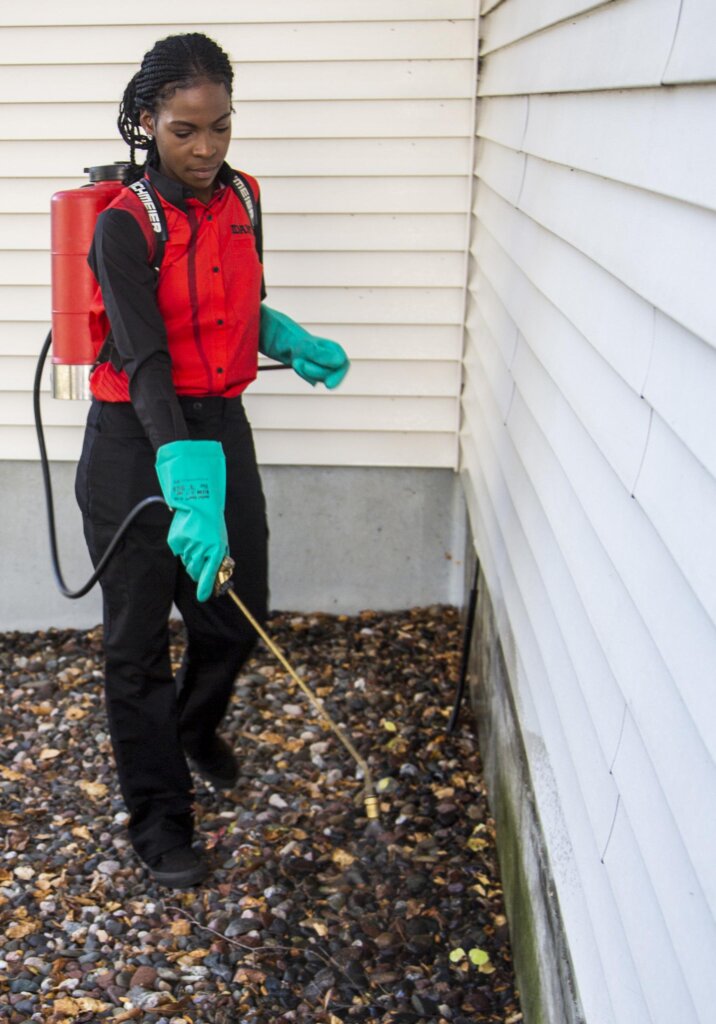A1 Charlotte Pest Control Companies - Your Neighborhood Pest Experts
A1 Charlotte Pest Control Companies - Your Neighborhood Pest Experts
Blog Article
Bed Insect Therapy Break Down: Contrasting Chemical Vs. Non-Chemical Solutions
In the world of pest control, especially when managing the relentless problem of bed bugs, the option between chemical and non-chemical treatment solutions can be a pivotal one. Both strategies use unique advantages and downsides, influencing variables such as efficiency, safety and security considerations, and total cost. By analyzing the nuanced details of each approach, a more clear understanding of which path to go after in attending to a bed bug problem can be achieved.
Efficiency of Chemical Treatments
Chemical therapies for bed pest problems have been extensively identified for their potent and quick efficacy in eradicating these insects. When thinking about the performance of chemical therapies, it is vital to comprehend that they can supply a fast and detailed option to a bed bug problem. Professional exterminators frequently count on insecticides to target bed bugs at numerous phases of their life cycle, consisting of fairies, adults, and eggs. These chemicals generally function by interrupting the bed bugs' nerves, bring about paralysis and eventual death.
Additionally, chemical treatments have the advantage of providing recurring results, meaning that they can remain to eliminate bed pests also after the first application. This residual activity is specifically helpful in combating any kind of possible re-infestations. In addition, the rapid activity of chemical therapies can bring alleviation to individuals facing serious bed bug invasions, enabling them to restore control of their living rooms swiftly.
Security Interest In Chemical Solutions
One critical facet that requires cautious factor to consider when making use of chemical remedies for bed bug therapy is making certain the safety of occupants and the environment. Direct exposure to specific chemicals utilized in bed insect treatments can lead to breathing concerns, skin irritation, or various other adverse responses, especially in individuals with pre-existing conditions or sensitivities.
Furthermore, the environmental effect of chemical solutions is another significant factor to consider. Some pesticides made use of in bed pest therapies may be harmful to beneficial insects, wildlife, and ecosystems if they seep right into the dirt or water systems. It is vital to use chemical treatments sensibly, adhering to safety standards, and thinking about much less hazardous choices to minimize these dangers and make sure the effective and risk-free administration of bed pest infestations.
Advantages of Non-Chemical Methods
Thinking about the possible safety and security problems and ecological effect connected with chemical services for bed insect treatment, exploring non-chemical approaches presents an appealing alternative with several distinct advantages. Non-chemical therapies are environmentally friendly, as they do not contribute to air or water air pollution, making them a lasting selection for pest control.
Furthermore, non-chemical options can be effective in targeting bed insects, consisting of hard-to-reach locations where chemical therapies might not permeate. Approaches such as warmth therapy, vacuuming, heavy steam cleaning, and cushion encasements supply thorough obliteration without making use of hazardous chemicals. In addition, non-chemical techniques can be less turbulent, needing marginal preparation and permitting quicker reentry right into dealt with areas. In general, going with non-chemical bed bug treatment approaches not just prioritizes safety and security and environmental management but likewise makes certain efficient and thorough pest control.
Limitations of Non-Chemical Treatments

Furthermore, non-chemical treatments frequently call for multiple applications to attain successful eradication. This can be time-consuming and might not always assure home pest control company full elimination of all bed insects and their eggs, especially in hard-to-reach or surprise areas.
Additionally, the success of non-chemical treatments greatly counts on proper execution and thoroughness, which can be challenging for individuals without specialist knowledge. Insufficient application of non-chemical best site methods might result in incomplete eradication, bring about persistent problems and the demand for added treatments.
For that reason, while non-chemical therapies have their benefits, it is necessary to acknowledge these constraints and consider them when identifying the most efficient technique for managing bed pest invasions.
Cost Contrast: Chemical Vs. Non-Chemical Options
Given the constraints associated with non-chemical therapies, an important facet to examine in the context of bed insect monitoring is the expense contrast between chemical and non-chemical options. In comparison, non-chemical therapies like heat therapy or steam can be much more expensive, with prices ranging from $1,000 to $6,000 for an entire home. While the initial cost of chemical therapies may seem reduced, several treatments may be called for to totally eliminate the invasion, possibly boosting the general cost.
Verdict

Thinking about the potential safety and security problems and ecological influence connected with chemical services for bed bug therapy, checking out non-chemical approaches offers a promising choice with several distinctive advantages.Given the restrictions linked with non-chemical therapies, a crucial element to examine in the context of bed bug monitoring is the cost comparison in between chemical and non-chemical options. In comparison, non-chemical treatments like warm therapy or heavy steam can be a lot more pricey, with expenses ranging from why not find out more $1,000 to $6,000 for a whole home. While the initial expense of chemical treatments may appear lower, multiple treatments may be needed to fully eliminate the invasion, potentially raising the total price.In final thought, when comparing chemical and non-chemical bed pest therapy choices, it is important to consider efficiency, safety and security, benefits, constraints, and cost.
Report this page